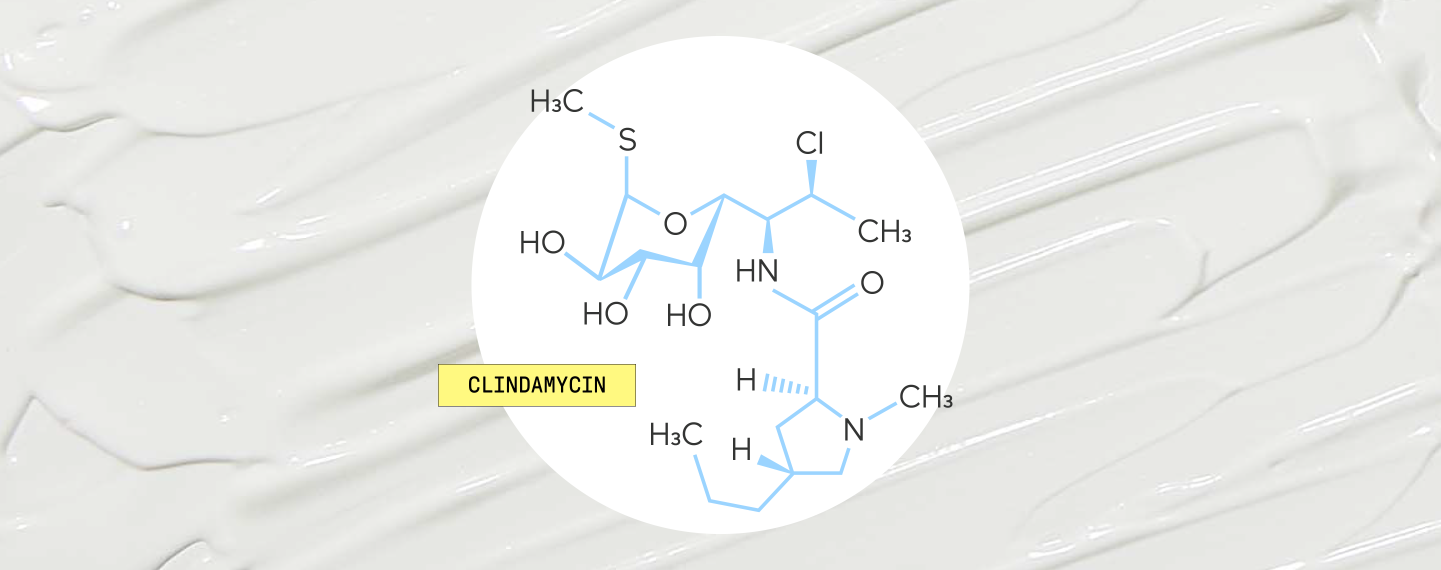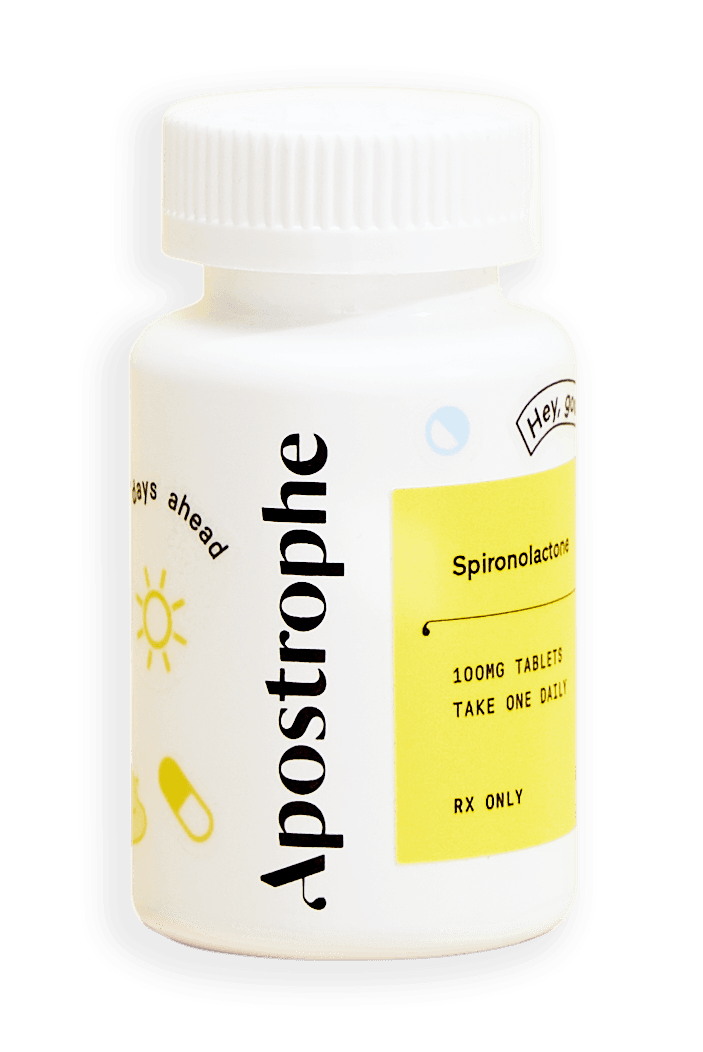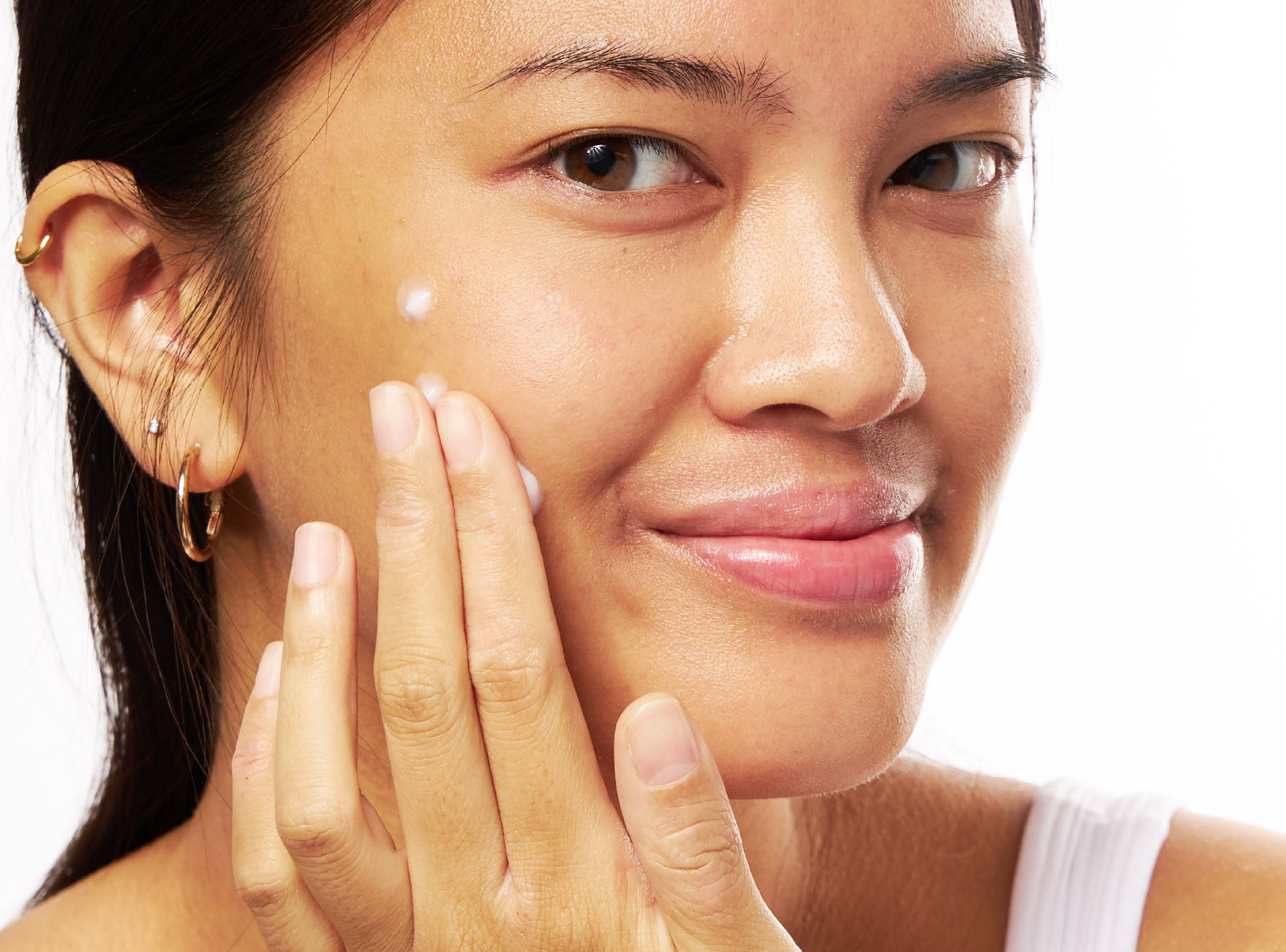Apostrophe Treatments
Clindamycin for Acne: How It Works


SHARE
Apostrophe Treatments
Clindamycin for Acne: How It Works
Medically reviewed by Aimee Paik, MD
Written by Annie Lam
Last updated 4/1/2022
When we talk about the best ingredients for acne, salicylic acid, benzoyl peroxide, and topical retinoids like tretinoin can come to mind. However, there's a topical acne medication that dermatologists commonly use to treat inflammatory breakouts: clindamycin.
If you haven't heard of this topical medication, here's everything you need to know. We'll be breaking down what clindamycin is, how it treats acne, and its potential side effects. You'll also learn how to apply clindamycin topical treatment and who is a good fit for this treatment.
What is clindamycin and how does it treat acne?
Clindamycin phosphate is an antibiotic that is typically used to fight a bacterial infection. You can find clindamycin phosphate in a topical form or as oral clindamycin medication. Antibiotic therapy is usually recommended for infections caused by bacteria, but antibiotic medicine can actually benefit inflammatory breakouts too!
Our dermatologists may recommend an oral antibiotic like doxycycline as a treatment for severe acne. This helps to kickstart acne treatment, but they, unfortunately, cannot be used long-term. However, topical antibiotics can be used to safely keep acne under control long-term.
Topical clindamycin for acne is typically used as a topical antibiotic to calm inflammation and reduce an acne causing bacterium called Cutibacterium acnes. It helps to calm inflammatory acne lesions and can also mildly improve non inflammatory lesions like blackheads.
What do the studies say about topical clindamycin?
Now that you know what clindamycin is, let's talk about what the studies say:
"Clindamycin 1% significantly reduced inflammatory and non-inflammatory lesions at week 12." - Archives of Dermatology
"Clindamycin 1% significantly reduced papules and pustules compared to vehicle at week 8." - Archives of Dermatology
Clindamycin phosphate can be used to treat a variety of different , from papules and pustules to inflamed or comedonal acne. Clindamycin topical treatment is able to effectively reduce mild to moderate acne on its own. However, it is even more effective when combined with other acne-fighting ingredients like benzoyl peroxide or tretinoin.
"Clindamycin combined with benzoyl peroxide was more effective than clindamycin alone at reducing acne." - Journal of Cutaneous Medicine and Surgery
While clindamycin can effectively treat mild or moderate breakouts, combining it with other acne treatments can help treat more severe acne.
Clindamycin side effects
Like all acne medications, clindamycin topical lotion does have a few minor side effects. Clindamycin is generally well tolerated, but some common side effects that you may experience include redness, dryness, skin irritation, or peeling. These side effects can happen when first starting out, but your skin should adjust to the treatment after a few weeks.
Using clindamycin topical treatment can increase your risk for antibiotic resistance. In order to prevent this, it's important to use a benzoyl peroxide gel or wash alongside your treatment. Using benzoyl peroxide helps to minimize the risk of antibiotic resistance.
How to use clindamycin
Topical clindamycin can be found in a few different formats but is most commonly found in lotion or gel textures. When used on its own, clindamycin lotion can be used morning or night, depending on your dermatologist's instructions.
After cleansing, pat dry your skin and follow with moisturizer. Our dermatologists recommend applying clindamycin lotion after moisturizer to reduce irritation. To make the topical solution easier to spread, try dotting it onto the skin before rubbing it into the entire affected area. If your skin is dry, you can follow with another layer of moisturizer.
As mentioned earlier, it's important to use clindamycin and benzoyl peroxide together to help prevent antibiotic resistance. There are formulas that combine clindamycin with benzoyl peroxide, but you can also use a benzoyl peroxide wash as a part of your skincare routine.
How long does it take for clindamycin to work?
Like most topical treatments, it can take anywhere from 8-12 weeks to start seeing results. Staying consistent with your skincare routine will help ensure you're getting the best progress.
You may experience purging if clindamycin is used alongside tretinoin, but clindamycin helps to reduce inflamed acne through this phase.
What is purging? It's a process where your skin is bringing dead skin cells and excess sebum to the surface of the skin. This can make it seem like you're experiencing more breakouts when first starting out on treatment. This typically takes a few weeks to a few months to pass, but healthier skin is on the other side!
How to get clindamycin for acne
Topical antibiotics like clindamycin are currently only available through prescription only, so you'll need to connect with a doctor for medical advice and treatment. Topical clindamycin cream is often formulated alongside other acne treatments to effectively treat acne vulgaris. Some ingredients that are typically formulated with clindamycin are a topical retinoid like tretinoin or benzoyl peroxide. While you can see a dermatologist in person, seeing an online dermatologist is a great way to get convenient, expert treatment for your skin.
At Apostrophe, you'll receive a customized treatment plan crafted by a board-certified dermatologist all from the comfort of your own home. They'll take a look at your medical history, photos, and skin concerns to find the most effective treatment for your facial acne, body acne, signs of aging, and more.
The best part? Every acne treatment is formulated with science-backed ingredients (like our clindamycin benzoyl peroxide formula) to effectively target your breakouts. If you're ready to get expert treatment for your acne, get started today!
Shop this post

Oral doxycycline

Clindamycin
Like what you just read? Sign up for our email list to get the scoop on skincare science delivered straight to your inbox.

Education
What is milia?
What is milia? Today, we’re jumping into one type of bump that you may have heard about most commonly in infants — milia.
Read More
Education
Best moisturizer for acne-prone skin
If you have combination acne-prone skin, figuring out which moisturizer is best for your skin might be tough. In this guide, we break down the best moisturizer for combination, acne-prone skin.
Read More
Education
How to build a face care routine
As you get into skincare, it might seem overwhelming, especially trying to figure out the order you're supposed to apply products in. Below, we detail how to build a face care routine for your skin!
Read More
